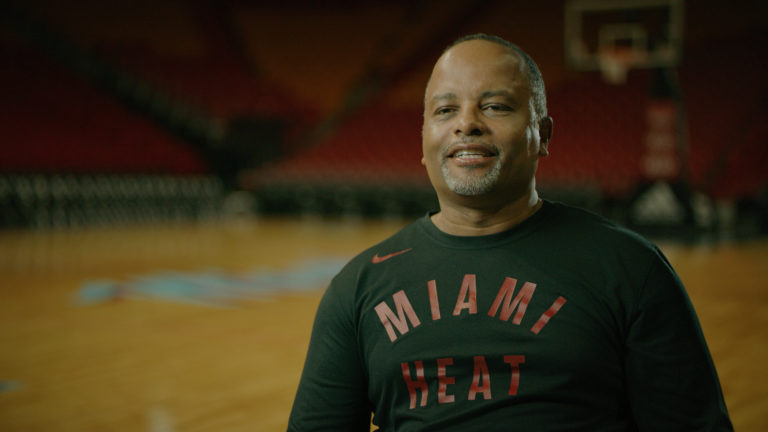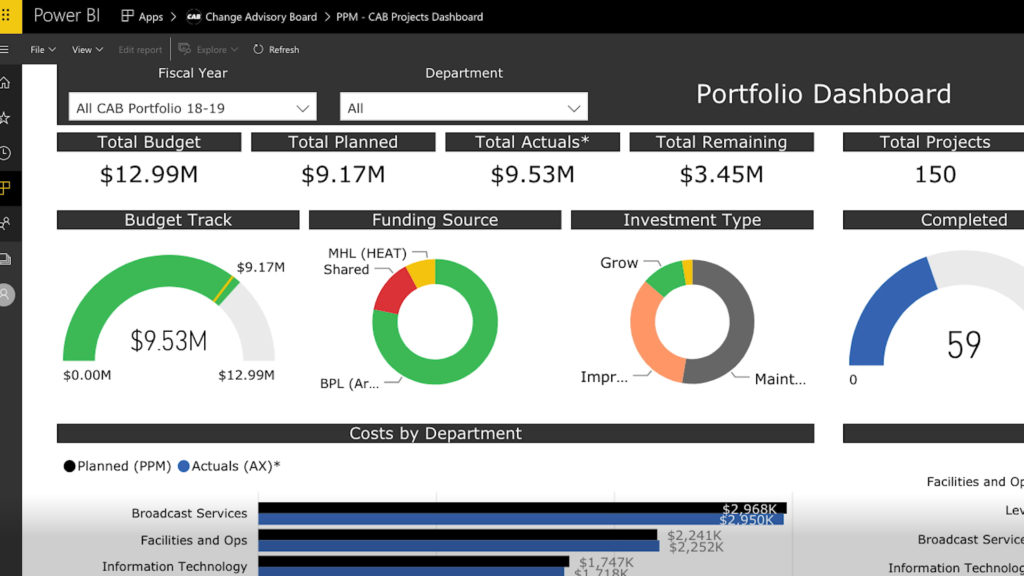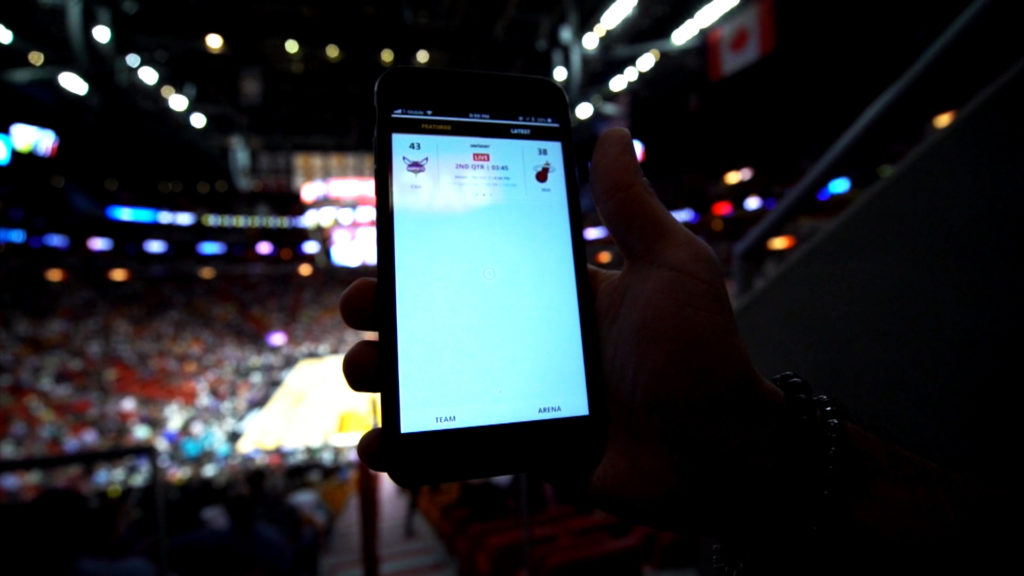
5 Key Takeaways from 2019 Stealthwatch Customer Research
October 22, 2019
How much security do you really need?
October 22, 2019The Miami Heat are on a fast break to innovate

The Miami Heat next week open their regular-season schedule – a slate that stretches deep into April and includes 41 home games at AmericanAirlines Arena.
The outcomes of those 41 contests? Unknown. Who will lead the team in scoring on those 41 nights? Check back in April.
How many fans will attend each of those 41 games? How many Jimmy Butler jerseys will they buy each night? How many Mofongo Dogs will they gobble during every game? Miami Heat executive Edson Crevecoeur already has the answers.

Within hours of the NBA schedule’s release in August, Crevecoeur had forecast the attendance for each game at AmericanAirlines Arena plus the food and beverage sales, retail sales, ticket sales and staffing needs for every event, fueling business decisions well before the first tip-off.
In basketball, they call that connecting from distance.
In this case, Crevecoeur and team made the prognostications using Microsoft Power BI, a data-visualization tool, to display the purchasing patterns of tickets, concessions and arena retail from seasons past to offer a clear view of game nights to come.
“We use Power BI to provide the right information to the right audience at the right time,” says Crevecoeur, vice president of strategy and data analytics for the Heat. “We’re able to understand what’s happening a lot quicker than we were in the past and react accordingly.”
Those insights are part of the Heat’s drive to become the NBA’s digital leader. It begins with real-time data that’s generated by fans and their mobile devices while in the arena – or while buying tickets or merchandise away from games. The data gets collected and enriched by Microsoft Azure.
Heat employees make sense of that data with Power BI, becoming better acquainted with the tastes and behaviors of individual customers. On game days, the team can swiftly re-position staff to better accommodate arriving crowds – and to cater more personally to the appetites of fans in the building, whether they’re craving Ropa Vieja or D.Wade commemorative gear.

“Our goal at the Miami Heat is not only to be one of the most innovative teams in sports, but to be innovation leaders across all industries,” says Matthew Jafarian, executive vice president of business strategy for the Heat and AmericanAirlines Arena.
Fans can see this digital evolution on their smart phones by downloading the Miami Heat mobile app, which becomes the digital focal point for fans attending Heat games or other live events at the venue, Jafarian says.
“Imagine walking up to AmericanAirlines Arena and your ticket is smart enough to know you’re attending an event that evening, so it pops up right on your home screen. You simply tap the app on the NFC-enabled pedestal and the ticket taker welcomes you into the venue,” Jafarian says.
“You check out real-time wait times at concessions, choose a great spot to eat and tap to pay with your phone. You can be in your seat and share a ticket with a friend that’s running late, all from the device in the palm of your hands,” he adds.

Two seasons ago, AmericanAirlines Arena adopted “mobile-only entry” and phased out paper tickets. That change is unleashing more opportunities for the Heat to better understand and communicate with their customers.
Based on how often a fan attends games, the opposing teams they tend to watch and the kinds of food or gear they buy at the arena, the marketing staff crafts and sends digital messages that are relevant to them, say, ticket packages or the arrival of new apparel.
“We want to know our customer,” says Lisette Toirac Perdomo, manager of data platform services for the Heat. “We want to anticipate what they want, so we can meet their interests.”
To gain that knowledge, the team creates 360-degree customer profiles, using the data generated whenever a fan interacts within the arena or visits online touchpoints, including the Heat app, Heat.com, AAArena.com or MiamiHeatstore.com, the team’s e-commerce presence.
Those digital interactions get captured by Adobe Analytics – a solution that measures and makes sense of web and app data – and is seamlessly integrated with Adobe Campaign, which connects the Heat to the customer throughout their journey via e-mail and push notification, Jafarian says. Adobe is a Microsoft partner.
“We capture some relevant information in Microsoft Dynamics 365,” a cloud-based tool that enables customer relationship management (CRM), Jafarian says. “We then put that fan profile into the hands of a Miami Heat sales or service person who can help provide a better experience.”

All that extra attention is expanding the team’s fan base, he says.
“Three years ago, we didn’t even know who was walking in the building because paper tickets are largely anonymous. Now we’re getting an understanding of who they are,” Jafarian says. “The fan experience is everything for us.”
About five years ago, the Heat saw the need to commit to a full-scale, back-office modernization – a big shift sparked by an abrupt change to the basketball roster.
About five years ago, the Heat saw the need to commit to a full-scale, back-office modernization – a big shift sparked by an abrupt change to the basketball roster.
As one of the winningest NBA teams of the past 25 years, the Heat had a dynastic run when, from 2010 to 2014, the team dominated the NBA thanks to three superstars – LeBron James, Dwyane Wade and Chris Bosh, dubbed “the Big Three.” During that span, the Heat reached four NBA Finals and won two back-to-back league titles, in 2012 and 2013. Ticket sales were hotter than a Miami summer, and there was no urgency to build a sales infrastructure. Then, the Big Three era ended.
James left the in 2014, while Wade and Bosh were gone by 2016.
“We were fortunate to have some of the greatest players to ever play the game,” Jafarian says. “Then we no longer had the Big Three, yet we still had to sell tickets. We stood up a CRM for the first time. It was a natural progression for us to choose Dynamics 365, enabling our salespeople to better sell.
“After we implemented the Azure data warehouse and Dynamics 365, we had a 30% year-over-year increase in our season ticket sales, with essentially the same team on the floor,” Jafarian adds.
The new system also saves the sales team precious time. In the past, sales reps assembled spreadsheets full of upcoming games. They emailed those spreadsheets to prospective customers, who would select certain games and inform the sales reps of their choices. The sales reps then generated invoices for the customers, Crevecoeur says.
“Now, through Dynamics 365, we’re able to provide an interface that customers can use to select exactly which games they want,” Crevecoeur says. “When the customer accepts those games, it goes right into invoicing. The customer immediately receives an email, asking them to sign an electronic invoice, and with the click of a button the tickets are theirs.
“This is a process that once took days to complete to now it’s happening in a matter of minutes,” he adds.
They found similar savings by using Power BI to get a sharper view of ticket sales from recent seasons, Crevecoeur says.

By analyzing the times that guests scanned their mobile tickets upon arriving – including at self-scanning entry “pedestals” throughout the arena – Heat staff identified distinct patterns showing when and where most fans prefer to show up on game night.
“We were able to determine that, if we shift the start times of our guest services reps by 15 minutes, we could save almost a million dollars,” Crevecoeur says.
The bulk of those savings are generated by decreased staffing costs and from the reduction of waste and spoilage at concession stands, he adds.
Such big wins – the kind earned off the court – are gaining fast fans inside other sports organizations. Heat executives are in talks with other sports franchises about potentially helping them digitally retool. In fact, Miami has contracted with at least one other NBA team to provide them the tools that help the Heat run their own business, Crevecoeur says.
“Sports teams are small organizations, basically mom-and-pop shops. But over the last few years, they’ve become multibillion-dollar mom-and-pop shops,” Jafarian says. “So owners are investing heavily in maximizing the value of these teams. That’s where the emphasis on data and digital has come.
“Now we’re helping other teams. That is really unique,” he adds. “Data is a new revolution in the business of sports.”
The post The Miami Heat are on a fast break to innovate appeared first on Microsoft Malaysia News Center.

